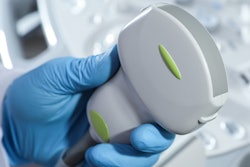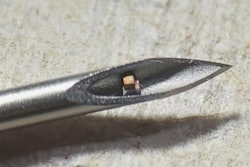
Ultrasound can accurately diagnose hand injuries while also being a fast, inexpensive, and potentially indispensable dynamic tool, according to research published April 29 in Ultrasound in Medicine and Biology.
Examining hand tendon injuries with sonography showed 100% accuracy, sensitivity, and specificity for diagnosing full-thickness hand tendon tears, as well as tenosynovitis of hand flexor tendons, according to a study led by Dr. Chris Nabil Hanna Bekhet from Ain Shams University in Cairo, Egypt.
"It also provides data that are important before diagnostic surgical exploration, and the process consumes less time than traditional wound exploration techniques or MRI," the authors wrote.
Hand and wrist injuries make up 28% of all musculoskeletal injuries and account for 14% to 30% of all patients treated in the emergency department. Tendon injuries are the second most common injuries, within injuries to the flexor tendons having debilitating consequences and high rates of reoperation.
Assessing hand injuries through clinical examination can overlook tendon injuries, and surgeons sometimes opt for explorative surgical methods to detect tendon injuries.
While using ultrasound to examine tendon injuries in the emergency department has its advantages, including eliminating the need for surgical approaches, it is not yet readily adopted by surgeons. This could be because clinicians lack education on how to use ultrasound to resolve clinical questions on the state of the tendon.
The study included 35 patients between September 2018 and January 2020 with trauma to the ventral surface of the hand and wrist who were presented to emergency departments or outpatient clinics. The subjects ranged from 18 to 58 years of age, with 24 patients being male and the other 11 being female.
The researchers examined 50 injured tendons in all flexor hand zones.
On ultrasound examination, 21 of the 50 injured tendons were reported to have complete tears, and 10 tendons were partially torn. The most common cause of injury was cut wounds by sharp objects (20 cases), with injury by a knife as the highest incidence.
In all, ultrasound was found to be statistically significant (p < 0.01) in predicting the surgical findings by correctly identifying the 21 fully lacerated tendons. It was also found to be statistically significant (p < 0.01) in predicting the surgical findings by correctly identifying partially torn tendons and determining the degree of the torn fibers.
The study's limitations included tests being performed by a single operating radiologist and the small sample size.
"More studies in this respect can popularize the technique among radiologists and clinicians," the authors wrote. "Our study also helps anchor the notion that musculoskeletal [ultrasound] could be widely employed for soft tissue structures, with their well-recognized advantages compared with other imaging techniques."




















